This was published 8 months ago
Why MIFF’s hottest films this year might also be the oldest
Does cinema’s future lie in its past? The popularity of retrospective screenings would suggest so.
By Jordan Prosser

Credit: MIFF
Cinema’s dead – haven’t you heard? – along with radio, television, print media, vinyl records, and countless other mediums that have weathered the storm of new technologies and fickle audience attention. But while rumours of cinema’s demise have most certainly been exaggerated, there’s no denying it’s been a bumpy few years. First, COVID shuttered theatres and halted productions around the globe. Then, dual Hollywood industry strikes in 2023 brought more cancellations, reshuffling and uncertainty, leading to a relatively lean release calendar in 2024.
Thankfully, whenever the pickings are slim, cinema has a foolproof fallback: its own past. Even before COVID, retrospective programming was surging. No longer merely the remit of auteur-friendly, arthouse picture houses, these days plenty of theatres cushion their calendars with an array of retro picks, from Hitchcock and Kubrick to Dirty Dancing and Cats. Tommy Wiseau’s so-bad-it’s-good mainstay The Room has enjoyed weekly late-night sessions at Melbourne’s Cinema Nova for almost 15 years now, while every summer, inflatable screens at parks, zoos, beaches and rooftops across the country light up with Labyrinth, The Goonies, 2001: A Space Odyssey, The Princess Bride, The Rocky Horror Picture Show … the list goes on.
And why not? Nostalgia sells, plus the technology is more accessible and high-fidelity than it’s ever been, contributing to the rise of Letterboxd culture and a wave of critical reappraisal for a century of cinema – both glaringly mainstream and staggeringly niche – that we almost certainly took for granted at the time.
Kate Jinx, programmer at the Melbourne International Film Festival, has watched this trend grow exponentially, but not for the reasons she initially thought.
“I started out programming classic films and repertory titles thinking it would attract older audiences who wanted to revisit those films,” she says. “But pretty quickly I found that it was actually younger audiences who wanted to see them for the first time, in a cinema setting. There’s a real fervour to see these films.”
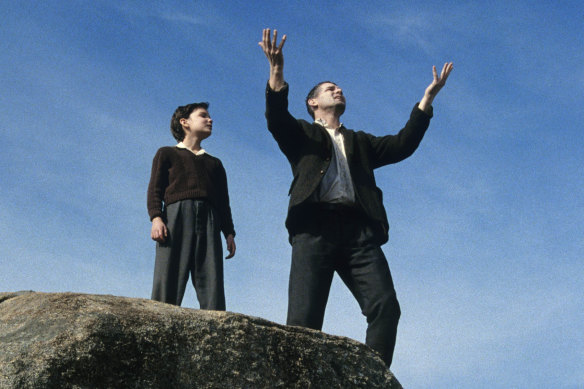
Eric Bana and Kodi Smit-McPhee in Romulus, My Father.Credit: MIFF
More than ever, it seems that newness needn’t determine a film’s impact or present-day popularity; movies made half-a-century apart can now coexist on an even keel.
MIFF’s own rarefied version of retro programming is back this year and stronger than ever, designed not so much to tickle the audience’s nostalgia receptors as to open their eyes to filmmakers and ways of movie-making that have been overlooked or lost to time. Even at their most obscure, these films tell us something profound about the people who made them and the time in which they were made. They might even offer clues about the future of the medium as it faces fiscal and cultural headwinds.
On the home front, MIFF is presenting a brand new restoration of Richard Roxburgh’s 2007 film Romulus, My Father, a poignant family drama based on the memoir by Raimond Gaita, starring Eric Bana and a very young Kodi Smit-McPhee. And from 2008, we have Joel Anderson’s cult horror mockumentary Lake Mungo. Sixteen years might not feel like long enough for a film to be deemed worthy of restoration, but Jinx assures me that the difference between the original version and the new 4K remaster is “extraordinary”.
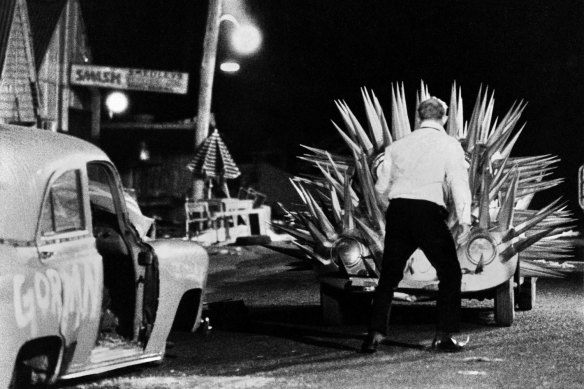
The Cars That Ate Paris.Credit: MIFF
The National Film and Sound Archive is also presenting a restoration of Peter Weir’s 1974 Australian New Wave classic The Cars That Ate Paris (Paris being a fictional outback town whose residents orchestrate grisly car accidents for passers-through). It would make a fitting double-bill with Ted Kotcheff’s 1971 Wake in Fright, which will premiere in all-new 4K glory as this year’s edition of MIFF’s ever-popular Hear My Eyes live music series. Melbourne-based soul group Surprise Chef will perform a new original score for the film over two screenings at Hamer Hall. (For my money, you could put Wake in Fright to ABBA and it would still be a timely and terrifying look at Australian masculinity, and the yardstick against which every outback thriller has been measured ever since.)
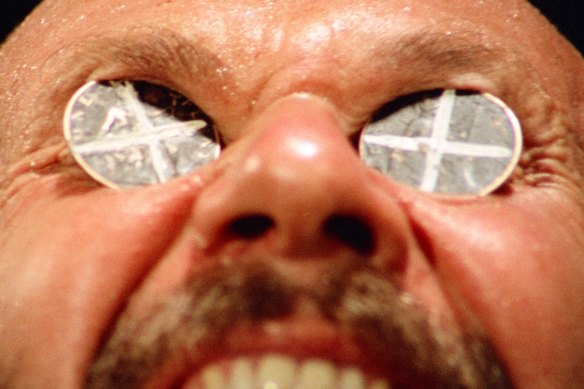
Donald Pleasence in Wake in Fright.Credit: MIFF
The jewel in the crown of MIFF’s retrospective strand this year is Iranian New Wave: 1962-79, a selection of more than a dozen films that screened as part of a landmark program at New York’s Museum of Modern Art last year. Spanning subversive documentaries, neo-realist dramas, and even a suite of “golden age” Iranian animation, this strand is a time capsule from a vibrant but near-forgotten cultural moment, lovingly salvaged and restored.
Jinx, who worked closely with MoMA on the selection for MIFF, says: “Some of the films we’re playing are scans of the director’s own print because that’s the only print left in the world. We’ve had people reach out to us saying they missed one of these films when it played at MIFF in the 1970s and haven’t been able to find it anywhere since, so they’re coming to see it this year.”
The Deer (1974) is one of the program’s must-sees. After its original ending was deemed too provocative, director Masoud Kimiai was forced by the Iranian secret service to shoot an alternate ending, one in which the protagonists surrender to the police. The version screening at MIFF plays both.
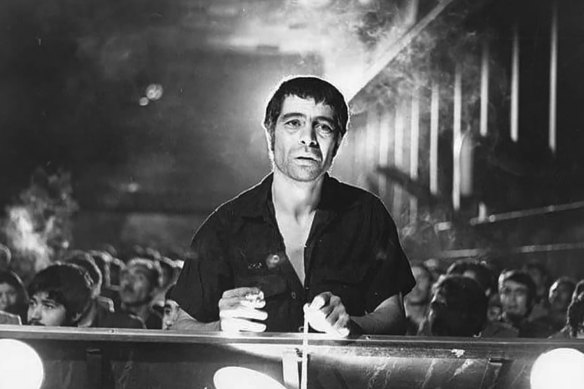
The Deer is one of the must-sees from MIFF’s Iranian New Wave strand.Credit: MIFF
Says Jinx: “These films all have a political backbone because of the time they were made, coming up to the revolution. It shows what these incredible filmmakers, artists, animators and writers were up against: this censorship, this kind of moral suppression – something that’s always in the picture with art.”
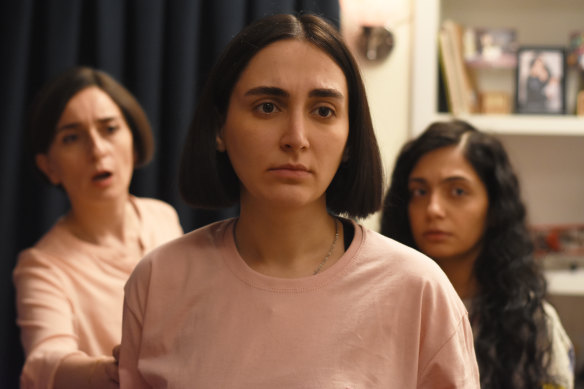
The Seed of the Sacred Fig.Credit: MIFF
There are clear echoes of this elsewhere in the program. The filmmakers behind two new Iranian films, The Seed of the Sacred Fig – a tense family drama set against a backdrop of civil unrest – and My Favourite Cake – a politically astute yet tender late-life romance – faced censorship and state interference all too similar to what their forebears came up against in the ’70s. Sacred Fig’s director, Mohammad Rasoulof, only made it to the film’s Cannes premiere after fleeing Iran, where in the past decade he’s been imprisoned, banned from making films, and had his passport revoked on grounds of “collusion” and creating “propaganda”.

My Favourite Cake.Credit: MIFF
Maryam Moghaddam and Behtash Sanaeeha, who made My Favourite Cake, similarly had their passports revoked, preventing them from attending the film’s screening at the Berlinale where it won the FIPRESCI Prize and the Ecumenical Jury Prize.
The personal as political is similarly writ large with Yvonne Rainer: Autobiographical Fictions, a selection of five restored films by the avant-garde American choreographer-turned-filmmaker spanning 1974 to 1996. “She was very well known as a dancer and a choreographer,” says Jinx, “but she wanted to move into film because she believed that dance no longer afforded her a full language in which to put forth her ideas.”

Yvonne Rainer’s MURDER and murder.Credit: MIFF
Jinx calls the films, which will have their Australian premieres at MIFF, “very arch, very funny” but also very modern. “Some are in colour, some are in black and white, and they’re filled with all these meta moments that are quite similar to what filmmakers are doing today.” She sees Rainer’s filmmaking legacy persist in the likes of Mati Diop’s Dahomey, a hybrid documentary about the restitution of cultural artefacts, as well as in MIFF’s Experimentations strand. This includes the debut feature of Melbourne filmmaker Audrey Lam, Us and the Night, and the “off-kilter odyssey” Pepe by Nelson Carlos De los Santos Arias, which ostensibly tells the story of Pablo Escobar’s pet hippopotamus. “If you needed two words for it,” offers Jinx, “think: Cocaine Hippo.”
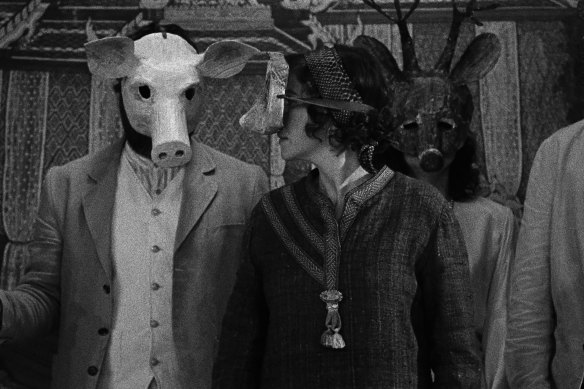
Miguel Gomes’ Grand Tour looks as though it could have been found in a vault.Credit: MIFF
Outside of retros and restorations, there are just as many new release films in the MIFF program that reach deep into the past to speculate on our present moment. Miguel Gomes’ lavish picaresque Grand Tour looks and feels as though it could have been found in a vault and dusted off for this year’s festival – until its sumptuous 16mm black-and-white photography bleeds into present-day footage from Singapore, Thailand, Vietnam, the Philippines, Japan and China, exploring the modern ramifications and elegant absurdity of historical colonial rule.
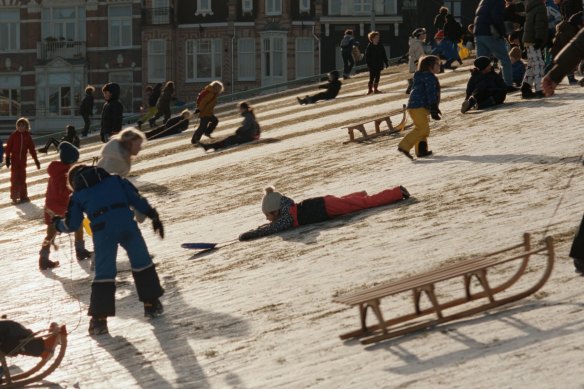
Steve McQueen’s Occupied City.Credit: MIFF
Over in the documentary strand, British filmmaker Steve McQueen’s Occupied City exhumes the not-so-buried history of the Nazi occupation of Amsterdam. For 266 minutes, it pairs its exhaustively detailed historical narration with images of a decidedly unoccupied Amsterdam in the throes of Covid lockdowns, compressing and capturing past and present in a single vital moment. It’s a rigorous, prescient examination of the long tail of the slow creep of fascism.
And then there’s Francis Ford Coppola’s Megalopolis, a blockbuster curio that feels in every sense like a film from another era. A $US120 million passion project, Coppola’s film riffs on the fall of ancient Rome to imagine a futuristic America. In the trailer, one character posits: “When does an empire die? When people no longer believe in it.” Coppola’s talking about present-day society, yes, but you get the sense he’s talking about cinema, too.
Lastly, no discussion of the MIFF program would be complete without a mention of their annual all-night movie marathon. After previous Jeff Goldblum and Nicolas Cage outings, 2024 sees a seven-film, 70th anniversary Godzilla fest on August 17. Curated by MIFF programmer Kate Fitzpatrick, the night begins with Ishirō Honda’s 1954 original, newly restored Godzilla – a film born from the devastation of World War II and the beginnings of the nuclear age – and concludes with 2016’s excellent Shin Godzilla, its bureaucratic bumblings and stark tsunami imagery a clear reflection of the 2011 Fukushima disaster. These films have always shown us how populist blockbuster cinema can provide an essential outlet for social anxiety; a grandiose, metaphorical mirror for the world it’s made in.
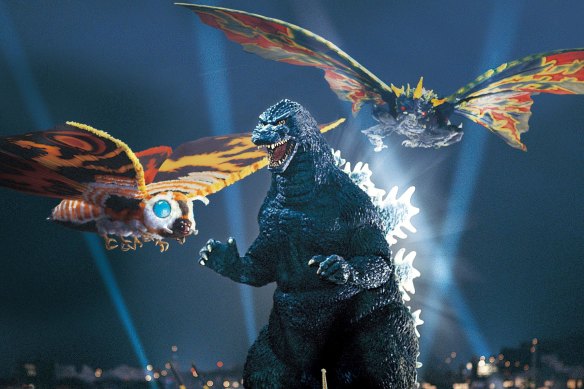
Godzilla vs Mothra (1992) is part of this year’s MIFF marathon.Credit: MIFF
As streaming and home entertainment continue to gnaw at the global box office, cinemas are embracing “event” movie-going and the premium ticket prices it attracts – be that endurance-testing movie marathons, luxury food offerings, large-format screens like IMAX, or even the sensory bombardment of “4DX” sessions, complete with rollercoaster seating and wind, water and fog machines. There’s a hint of this in MIFF’s ever-evolving program, which this year sees the return of its themed “Food & Film” collaborations with some of Melbourne’s best restaurants, and even a twilight screening of Robert Connolly’s Magic Beach at the Peninsula Hot Springs.
But Kate Jinx points out that it’s the comparatively humble retrospective strands that often sell out first at MIFF – because these rarely seen gems and dazzling restorations are an event unto themselves. “Seeing these older films at festivals is so great because it contextualises them,” she says. “And they’re all in dialogue. It’s not about being an old film, or a new film. Cinema is in constant conversation with itself.”
The Melbourne International Film Festival runs August 8-25; miff.com.au